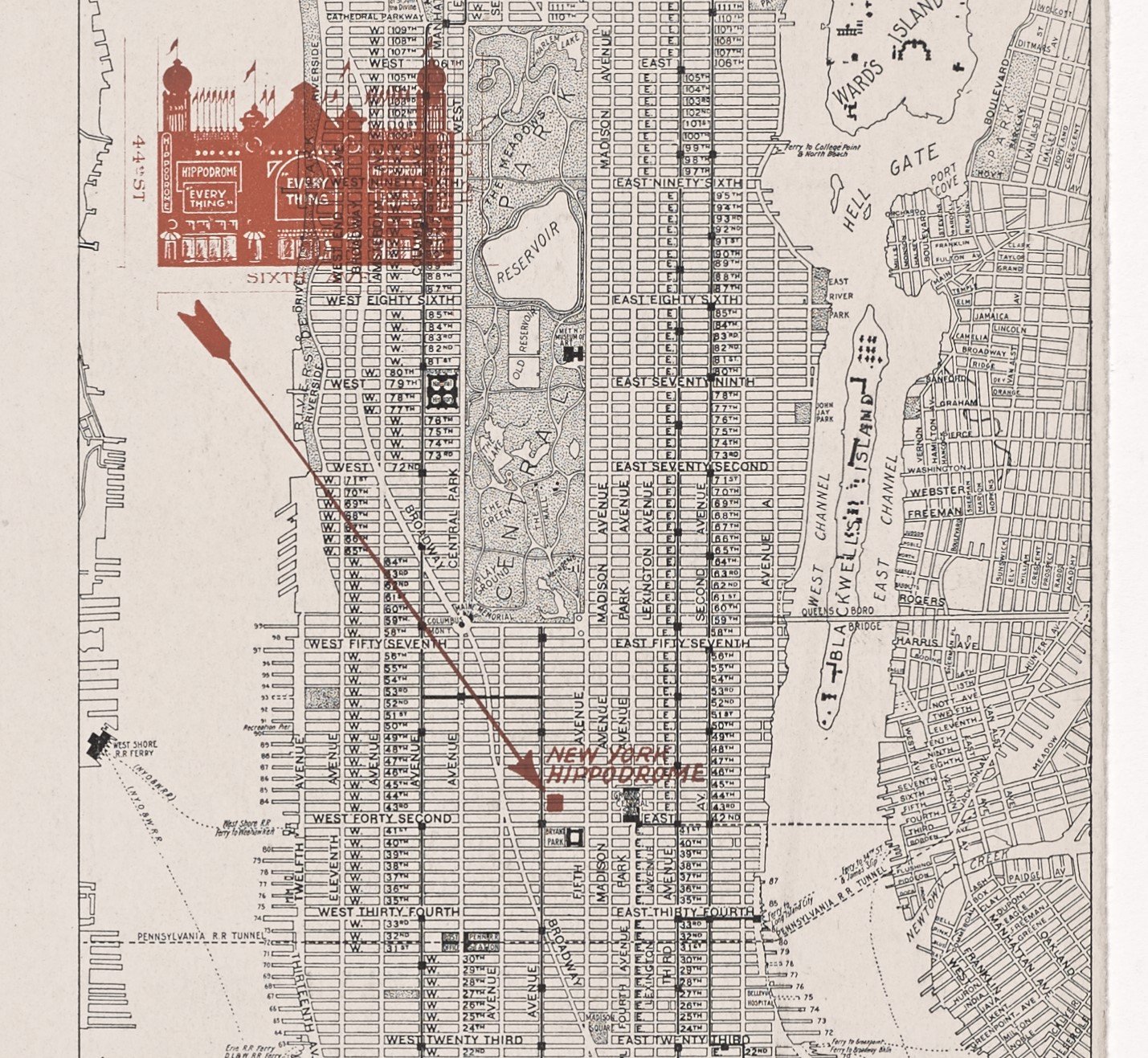Happy new year! I have been spending my winter break between semesters hard at work on my Hippodrome book, sort of. I set myself the task of reading comps: books that are both recent and comparable to my book project. You can think about them as competitors or titles that will complement your project. I prefer the latter. But in any case, comps are supposed to help you (and eventually, your editor) locate your project on a pre-existing mental map.
Billy Rose Theatre Division, The New York Public Library. "New York City subway map with Everything cover" The New York Public Library Digital Collections. 1918 - 1919. https://digitalcollections.nypl.org/items/822ed850-61fe-0132-7188-58d385a7b928
Sometimes people talk about their comps in a fun way, like they’re pitching a Hollywood producer: it’s Jaws, but in space; imagine if Seabiscuit met Finishing the Hat! I wanted to give myself an excuse to read recent nonfiction books and really pay attention to how they were put together. What I basically realized is that all of my academic press books were about popular performance in the early twentieth century — like the award-winning T.O.B.A. Time: Black Vaudeville and the Theater Owners’ Booking Association in Jazz-Age America by Michelle R. Scott. (And Sharkey: When Sea Lions Were Stars of Show Business [1907-1958] by Gary Bohan Jr.). They were really useful for seeing how authors introduced information about typically forgotten or misunderstood types of performance, how they integrated anecdotes and biographical background, how they cited archives.
Butterbeans and Susie, a comedy duo who made their name on the T.O.B.A. circuit. https://en.wikipedia.org/wiki/Butterbeans_and_Susie#/media/File:Butterbeans_Susie.jpg
These comps were balanced out by trade press books that I can only call micro-histories of places within New York City. The Women’s House of Detention: A Queer History of a Forgotten Prison by Hugh Ryan made a big impression. I both highlighted and took a screenshot of the last two paragraphs. The book ends, “Every day, something slips into history that we will never recover: a memory, a document, the sound of a dead woman’s voice. //Save what you can.” Ryan and Prudence Peiffer, who wrote one of my favorite books from last year, both locate their stories with such vividness within a particular neighborhood and way of life. The same is true of Daniel Lavery’s Woman’s Hotel, a novel that has a quirky precision that I absolutely loved.
Schomburg Center for Research in Black Culture, Art and Artifacts Division, The New York Public Library. "Women's House of Detention" The New York Public Library Digital Collections. 1935 - 1943. https://digitalcollections.nypl.org/items/77782ee0-d56d-0131-f1ac-58d385a7bbd0
These books all share a commitment to specificity and a skill at verbally sketching the contours of a space. What’s most striking, though, is that they all use history as a way of thinking through the lost possibilities for collective culture. Proximity makes things happen. And I want to use these books to think about what possibilities the Hippodrome made possible.


